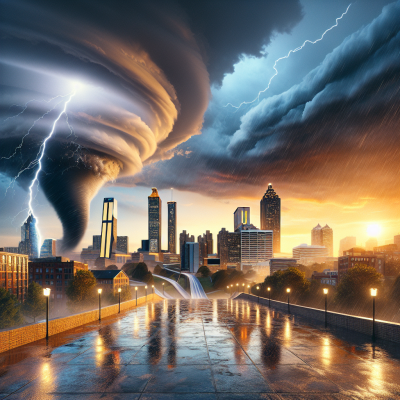
Extreme Weather in Atlanta
Thunderstorms and Lightning
Atlanta experiences its fair share of thunderstorms, particularly during the warmer months. The combination of heat and humidity often results in convective activity, leading to afternoon and evening storms. Thunderstorms in Atlanta can be quite intense, characterized by heavy rainfall, frequent lightning, and gusty winds.
Lightning is a significant aspect of these storms and poses numerous risks. Being the southeast, Atlanta is part of one of the more lightning-prone regions in the country. It is crucial for residents and visitors to practice lightning safety. Key guidelines include staying indoors during storms, avoiding water-related activities, and not seeking shelter under trees. Ensuring that electronic devices are unplugged can protect against power surges caused by lightning strikes.
Tornado Risk and Safety Tips
While not as commonplace as in other parts of the Southeastern United States, tornadoes do pose a risk in Atlanta. The city lies on the periphery of Dixie Alley, a notorious region for tornado activity owing to its unique geography and weather conditions.
Tornadoes can occur with little warning, making preparedness essential. Therefore, residents should remain informed by monitoring local weather updates and alerts, particularly during the spring and fall tornado seasons. It's advisable to have a well-stocked emergency kit including water, non-perishable food, flashlights, and a battery-operated weather radio. Designating a safe space, such as a basement or an interior room without windows, can significantly enhance safety during such events. Practicing tornado drills at home and knowing the difference between a watch and a warning can also be lifesaving.
Coping with Heavy Rain and Flooding
Atlanta's topography and rapid urban development make certain areas vulnerable to flooding. With thunderstorms often bringing torrential rains, flash floods can occur with little to no warning. An inch of rain can quickly overwhelm drainage systems, resulting in flooded roads and neighborhoods.
When dealing with heavy rain and potential flooding, staying informed via weather apps or local news alerts is crucial. Avoid driving through flooded areas—it's difficult to discern water depth, and vehicles can be easily swept away. Simple actions like clearing leaves and debris from gutters and storm drains can help mitigate urban flooding.
Residents should also consider the benefits of having flood insurance, especially those living in flood-prone zones. Understanding the city's historical flood areas can be helpful in making informed decisions about property and travel safety during extreme weather conditions.









